Discover Mérida, Spain’s Hidden Roman Treasure
Let me take you on a journey to Mérida, a hidden gem of Spain, full of history and charm. With every step you take, you'll almost stumble over the stunning remains of the ancient Roman Empire. Visiting these impressive ruins and monuments will transport you back to a bygone era. But Mérida has so much more to offer. After soaking up all this culture, treat yourself to the delicious local cuisine. Here's a rundown of our discoveries to make sure you don't miss a thing in this fascinating city.

Mérida's Roman roots: From legions to monuments
The story of how the Romans came to Mérida is a fascinating one. In 25 BC, the Emperor Augustus decided to build a new city to house the veterans of the V Alaudae and X Gemina legions. These legions were originally formed by Julius Caesar and were active in Gaul and later in other campaigns, including Hispania. Emerita Augusta, as the city was called by Augustus, quickly became a major hub in the Roman road network and played a crucial role in the defence of the western part of the Roman Empire.
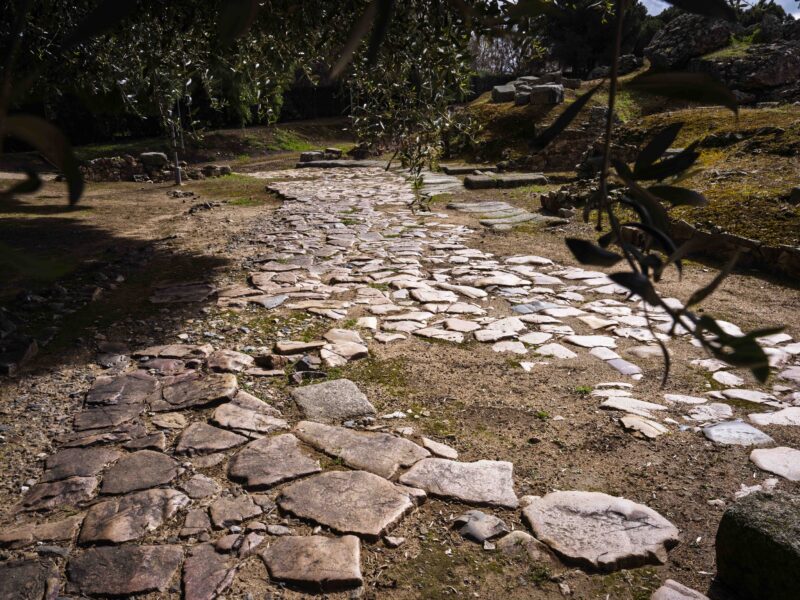
A divine legacy
When the emperor Augustus died in 14 AD, he was elevated to the status of a god in a new Roman cult: the worship of the emperor and his family. Augustus left behind a vast empire stretching from Germania to Asia. In Hispania, he founded three provinces, each with its own capital: the modern cities of Tarragona, Cordoba and Mérida.
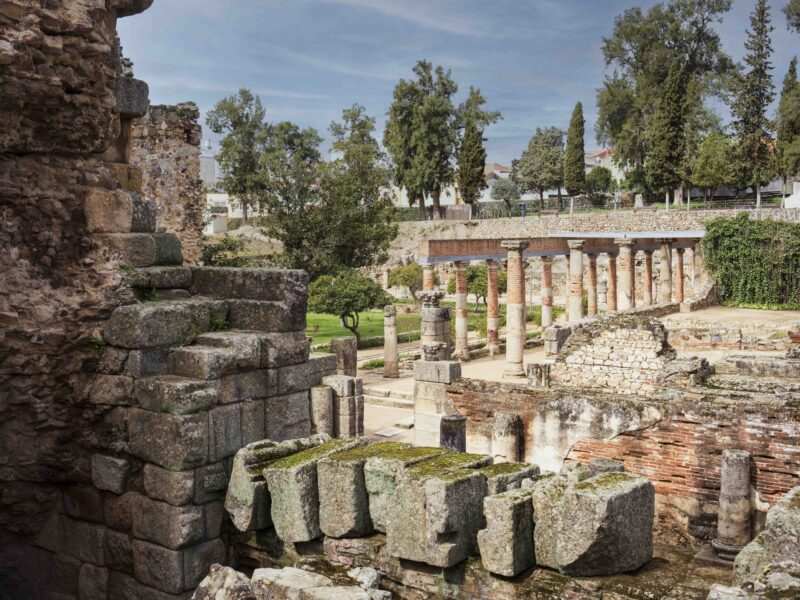
Walking through history
As you stroll through Mérida, you'll get a glimpse of the city's rich Roman history, knowing that you're literally walking in the footsteps of the Roman soldiers and citizens who once put this city on the map. It's a unique experience that takes you back to the time of Emperor Augustus and his legions.
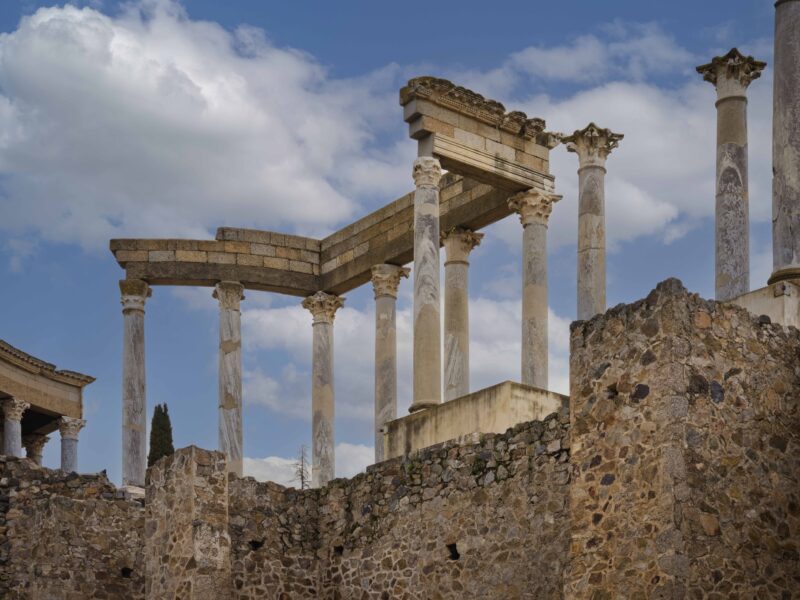
Roman Mérida: Must see monuments
Mérida grew into an impressive city with magnificent buildings such as the Amphitheatre, the Roman Theatre, the Temple of Diana, the Casa de Mitreo and the Milagros Aqueduct. These monuments can still be admired today.

The Amphitheater: Gladiators and Roman architecture
The Amphitheatre of Mérida is an impressive piece of Roman architecture that you shouldn't miss. Built in 8 BC, this monument, located next to the Roman theatre, was used for spectacular fights between gladiators and animals. The amphitheatre has an elliptical shape with an arena measuring 64 by 41 metres, three monumental entrances for dignitaries and organisers, and 13 smaller entrances for the public.
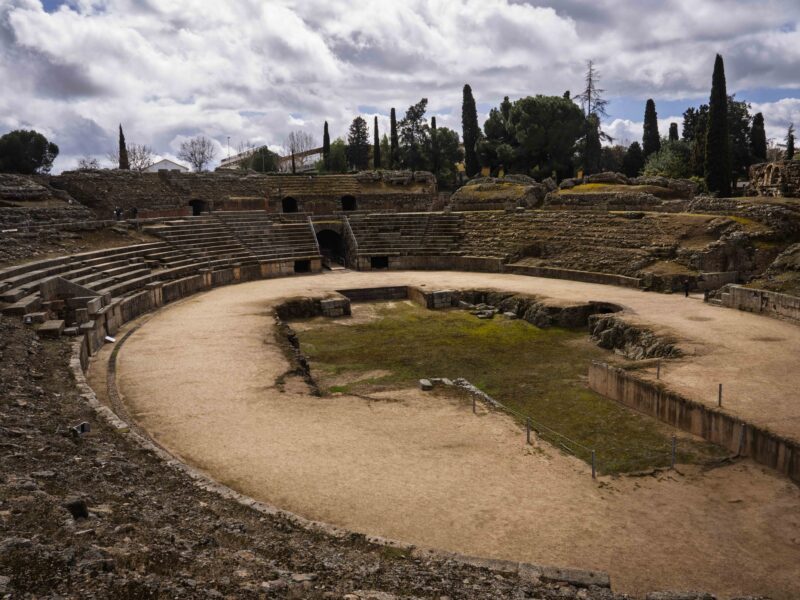
Innovative building material
The special feature of this structure is the use of caementicium, or Roman cement, a revolutionary building material at the time, which ensured the strength and durability of the structure. It was made from pebbles, lime and river sand.
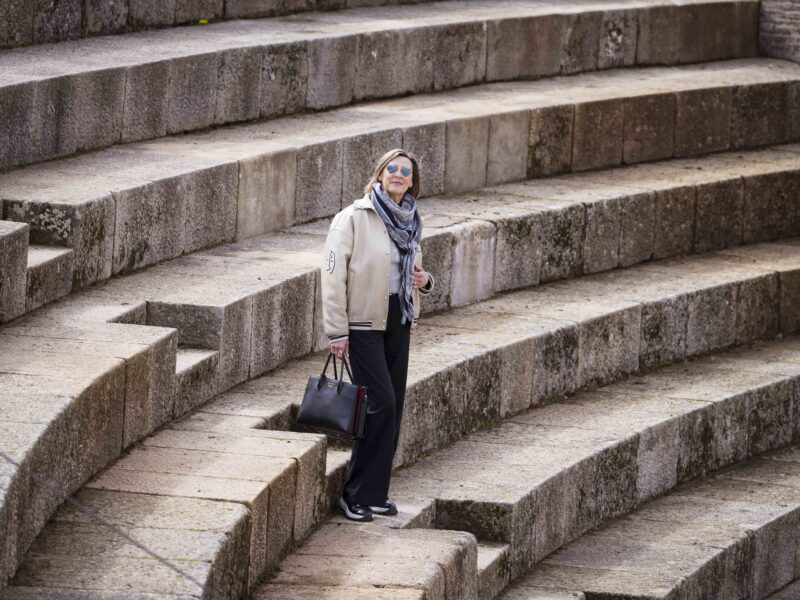
Historical connection
The amphitheatre was surrounded by an important Roman road that linked Mérida to other parts of the Empire, and which is still visible today.
The Roman Theatre: A historical jewel
The Roman Theatre is one of the most impressive and best-preserved theatres from the Roman period. Built between 16 and 15 BC under the direction of Consul Marco Vipsanio Agripa, the complex was used for theatrical performances and cultural events. It could accommodate about 6,000 spectators, divided into three sections. The ima cavea was reserved for the elite, the media cavea for the middle class and the summa cavea for the common people.
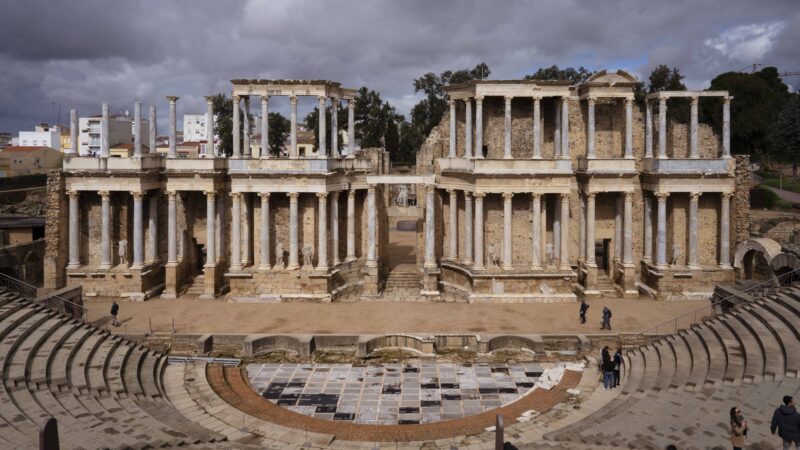
Cultural treasure
One of the most striking parts of the theatre is the imposing scaenae frons, a high stage wall decorated with double rows of columns and statues of gods and emperors. Behind the theatre was the Casa-Basilica, a space used for religious and administrative purposes, where the imperial cult was honoured.
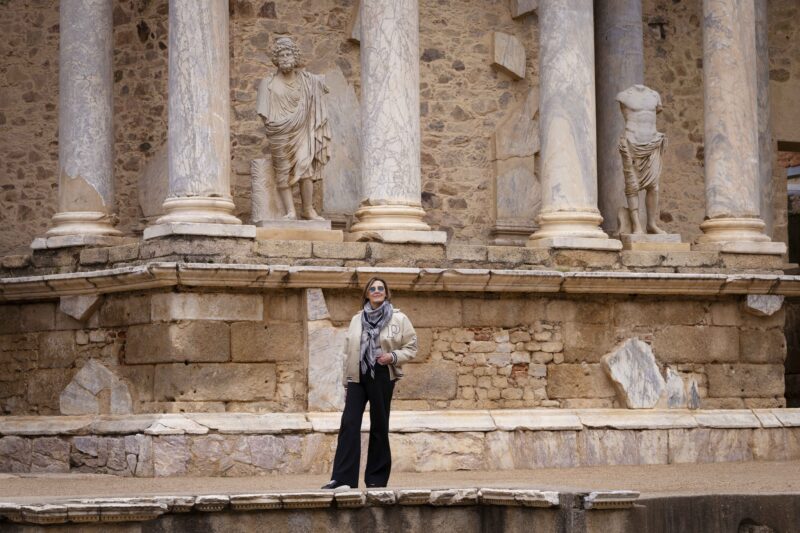
Rediscovery
The theatre was buried under about 8 metres of earth for 15 centuries until it was excavated in 1910. Today it is one of the best-preserved Roman theatres and an absolute must when you’re visiting Mérida.
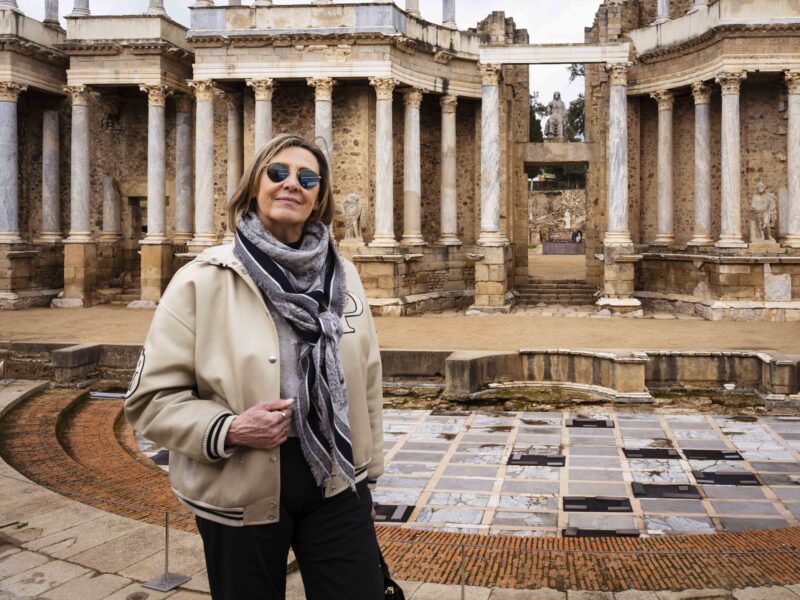
The Temple of Diana: From temple to Renaissance palace
The Temple of Diana is one of the most intact Roman temples on the Iberian Peninsula. Built by legionary veterans in exchange for their stay in the new colony, the temple was constructed of local granite and plastered with stucco, rather than the expensive marble rarely used outside Rome. The temple is famous for its impressive 8-metre-high Corinthian columns, which still stand in their original rectangular formation.
From pagan temple to Islamic building
After the fall of the Roman Empire and the rise of Christianity, all the pagan temples were closed. In the 8th century, the city of Mérida was handed over to the Islamic troops of Muza, who used the old Roman and Visigoth buildings as the basis for new constructions. On the site of the temple of Diana, a new building was erected for the emir, using reused Roman materials. After the Muslims were expelled from Spain, Mérida underwent considerable dismantling, with many important buildings being destroyed.
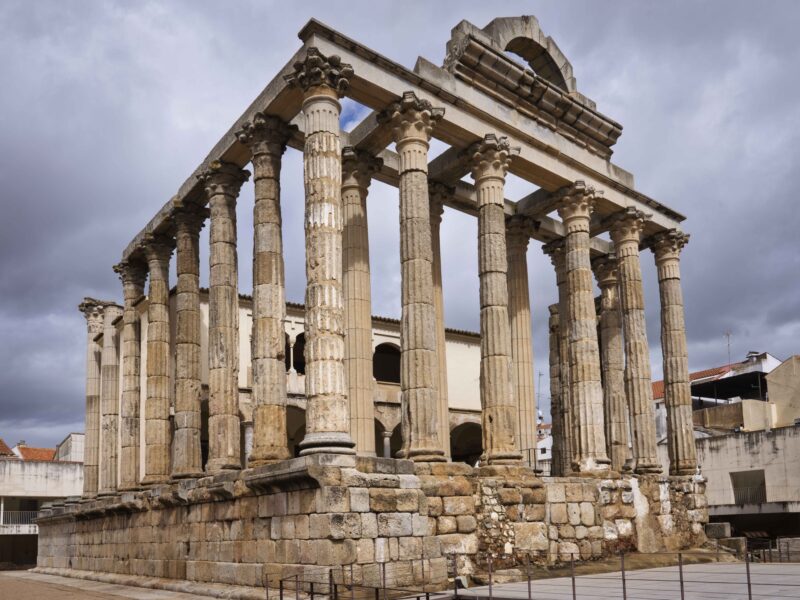
A Renaissance palace
At the end of the 16th century, the Los Corbos family built a palace on the remains of the Temple of Diana, using the structures of the temple that still existed.
Awareness of the past
In the 17th century there was a great interest in local history. Scholars such as Moreno de Vargas focused on the preservation of historical facts and monuments. He named Mérida's temple the Temple of Diana, comparing it to the Temple of Diana at Ephesus, one of the Seven Wonders of the World. The locals, however, knew it as the Casa de Milagros, or House of Miracles.
National Monument
It wasn't until the 20th century that the Temple of Diana was declared a National Monument and included in Mérida's heritage. Ironically, the construction of the palace of the Los Corbos family contributed to the preservation of the temple, which is still in excellent condition.
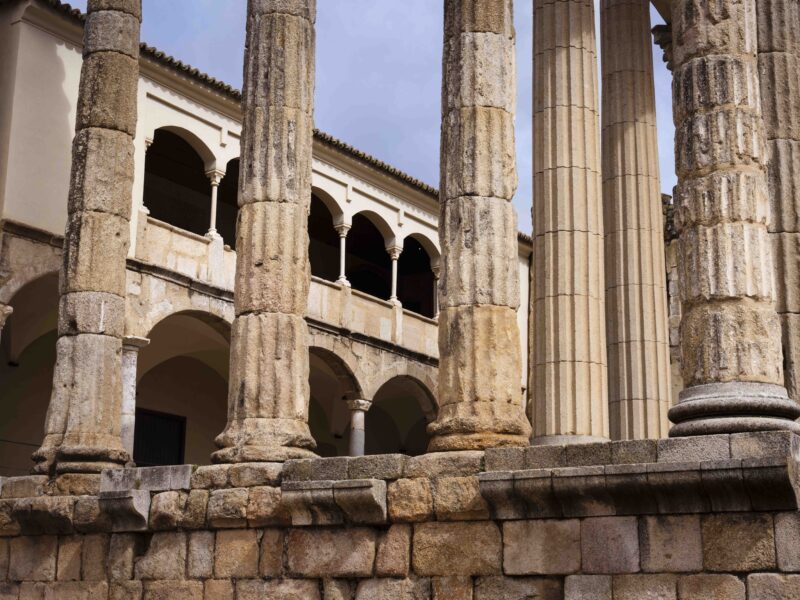
Casa de Mitreo: A glimpse into the life of a wealthy Roman family
Casa de Mitreo is an archaeological gem that offers a fascinating insight into the life of a patrician family in Roman times. This impressive villa, built at the end of the 1st century, is located just outside the old city walls of Mérida. The villa takes its name from the nearby sanctuary of Mithras, a Persian deity popular with Roman soldiers.
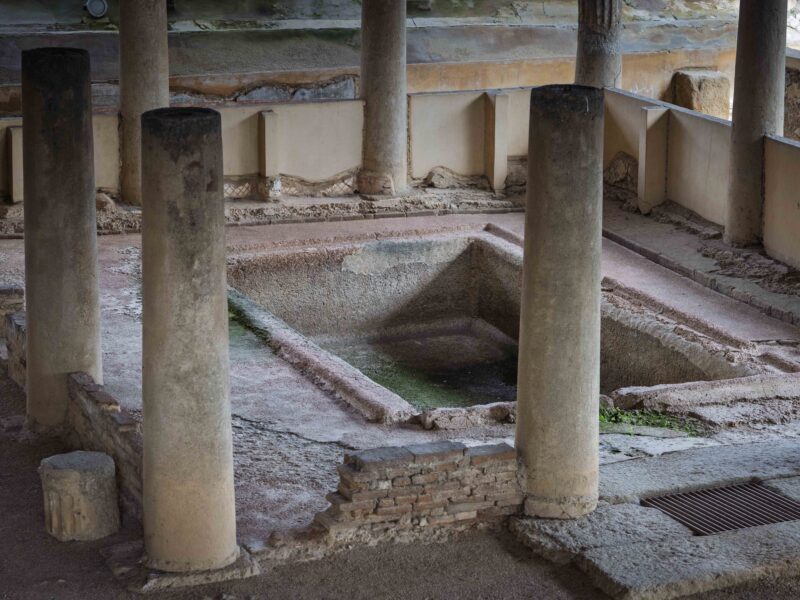
Architectural beauty
The villa is organised around three beautiful courtyards, including an atrium with an impluvium to collect rainwater. A walk along the rooms of the Casa de Mitreo gives you a good idea of the daily life of the Roman elite. There are remains of colourful frescoes on the walls and mosaics on the floors. The owner's reception room has the famous Cosmogonic Mosaic, a really beautiful work of art showing the story of how the Roman universe was created.
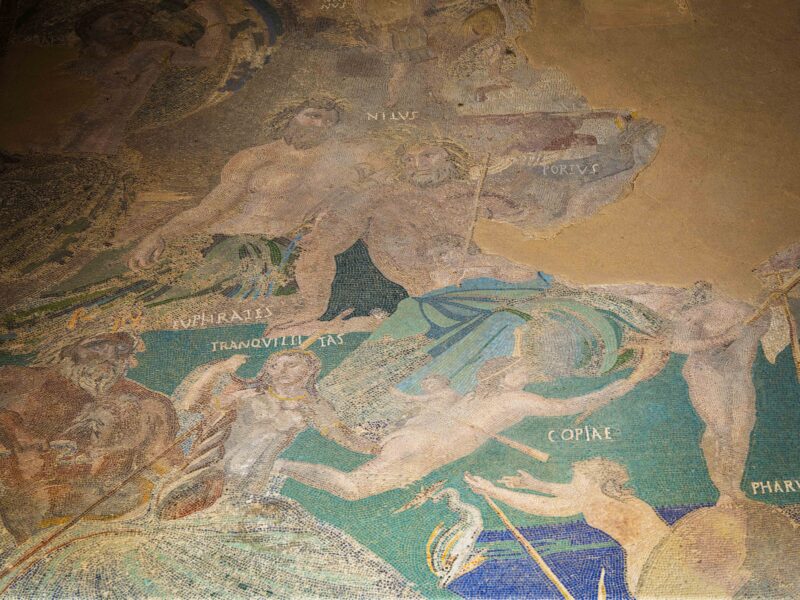
Luxury and comfort
The villa has its own thermal complex and an underground room that served as a cool place where the residents could escape the summer heat. A kind of air conditioning system avant la lettre.
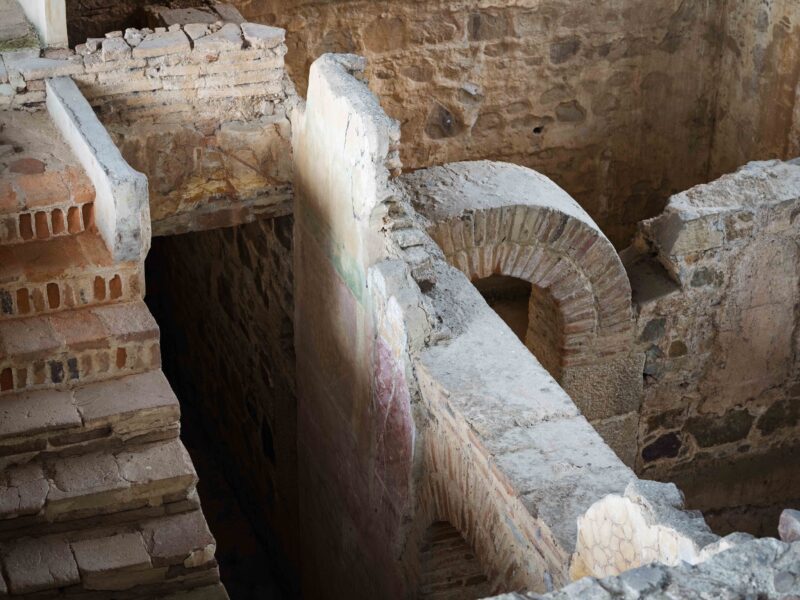
Discovery and conservation
Until the 20th century, the land on which Casa de Mitreo stands was used for farming. In 1964, during the construction of a clinic, workers came across the ruins of the villa. Construction was stopped and moved to another site. Archaeological excavations revealed the beautiful parts of Casa de Mitreo and in 1993 the site was declared a UNESCO World Heritage Site.
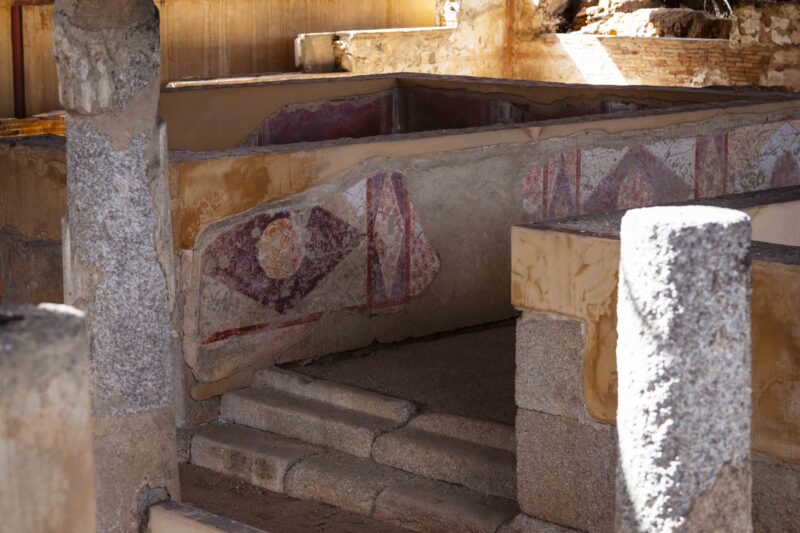
The Milagros Aqueduct: An incredible feat of Roman engineering
The Milagros Aqueduct, also known as "The Wonders", is a stunning example of Roman engineering from the 1st century AD. This impressive structure stretches over 830 metres and carried water from the Proserpina Dam to the city of Mérida. Made of granite blocks and red brick, the aqueduct is made up of 38 arches, some of which are up to 25 metres high.
Why 'The Wonders'?
The locals named the aqueduct 'The Wonders' because they were so impressed by how well the structure had been preserved, even after all these centuries.
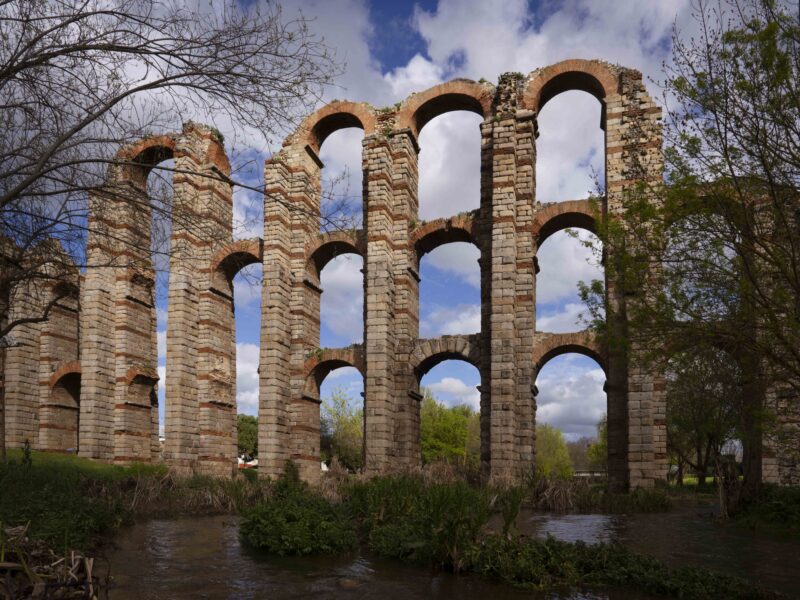
The crypt of the Basilica de Santa Eulalia.
The crypt at the Basilica de Santa Eulalia is a great place to learn about the history of Mérida and the legend of Santa Eulalia, the city's patron saint.
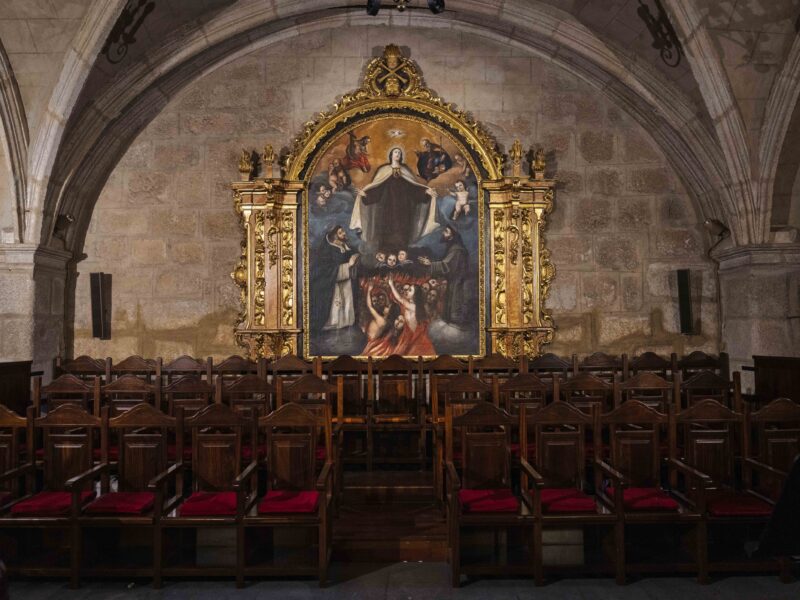
A look into the past
Under the current Iglesia de Santa Eulalia are the remains of a Roman necropolis, a mausoleum in honour of Santa Eulalia, and the foundations of a 5th-century basilica. The different layers of history here show how Christianity in Mérida has changed over time, and how Santa Eulalia is honoured there. It wasn't until 1990 that the crypt was found, during some archaeological digs.

The Legend of Santa Eulalia
Santa Eulalia was a young Christian martyr from the 4th century. According to legend, she was arrested and tortured for her faith at the tender age of thirteen. She died a martyr, becoming a symbol of resistance against religious persecution due to her courage and deep devotion. Her grave became a pilgrimage site, and the basilica was built to honour her.
What are the main points of interest?
When you visit, you can admire the remains of old Roman houses, the necropolis and the mausoleum. A candle marks the spot where the martyr's grave is. Make sure you visit the nearby chapel, El Hornito, which is dedicated to Santa Eulalia.
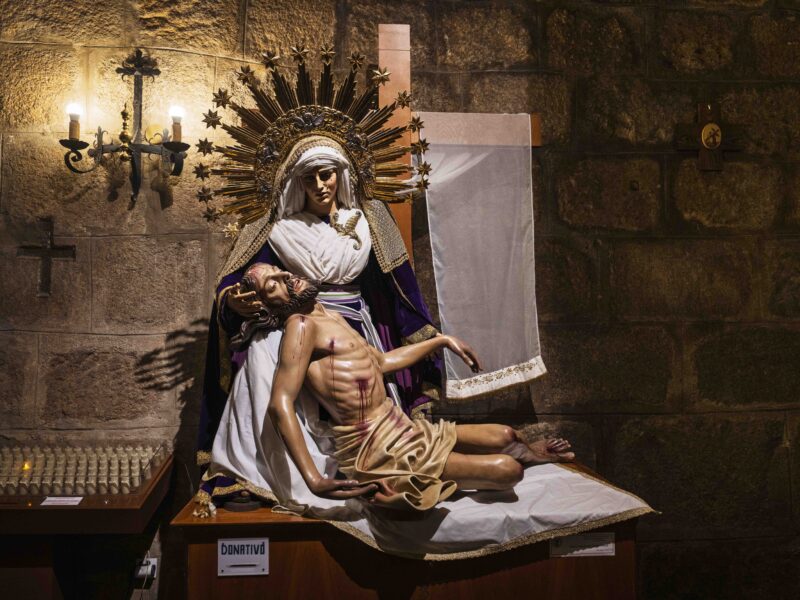
Local delicacies in Mérida: from churros to gourmet tapas
After exploring the culture, it's time to enjoy some delicious local food. Start your culinary adventure at Más Que Churros, a popular spot for tasty churros and hot chocolate. For lunch or dinner, you must try Sybarit Gastroshop, located by the Trojan Arch.
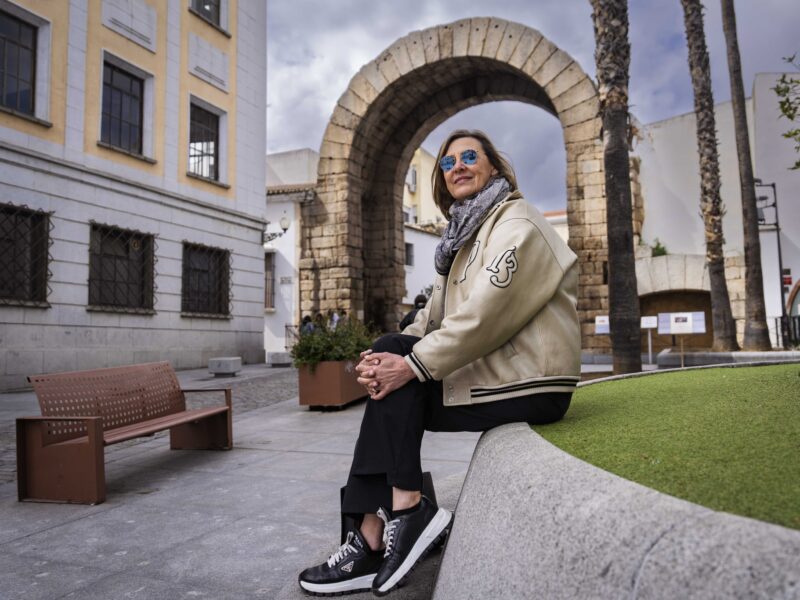
Más Que Churros
Picture this: perfectly crispy churros, thick or thin, freshly baked and still warm. Accompanied by a delightful cup of hot chocolate. For this taste experience, go to Más Que Churros on Avenida Numancia. Both locals and tourists gather in this small café for a piece of perfection. The friendly service makes the experience even better.
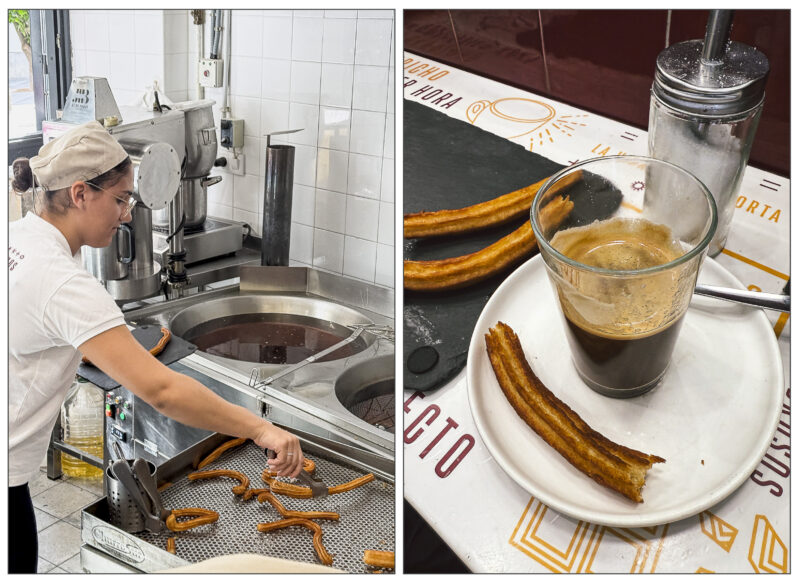
Sybarit Gastroshop
It's time for tapas! At Sybarit Gastroshop, get ready for a culinary journey. This tapas bar is a great place to enjoy a selection of dishes, from salads to meat and fish. We tried some top-quality Iberian ham, game tataki with sweet potato puree, and super juicy octopus with potatoes and pimentón de la vera. I'd definitely recommend it!
